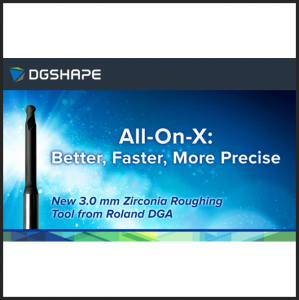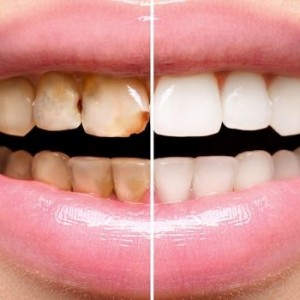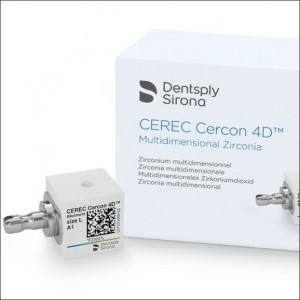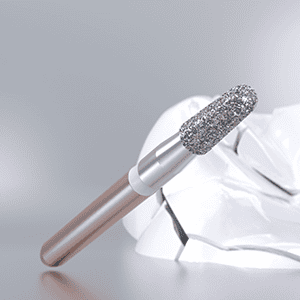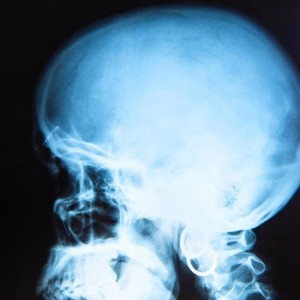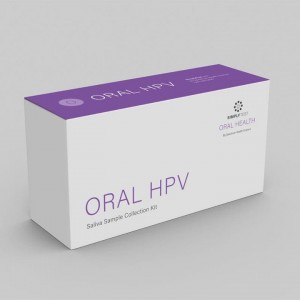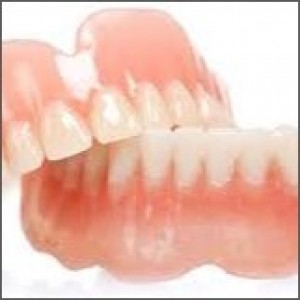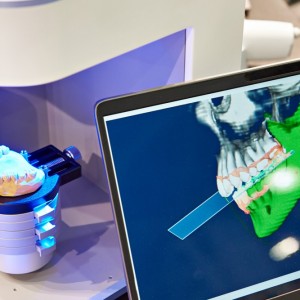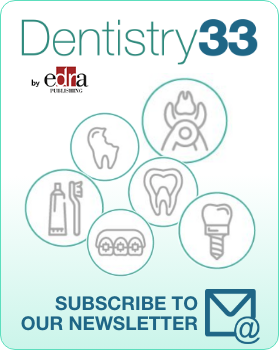
Fixed dental prostheses: which is the gold standard material?
Alessandra Abbà
Metal ceramic has always been the golden standard for implant‐supported reconstructions in the past and the most investigated material in literature, but nowadays the application of all-ceramics, in particular zirconia, as restorative material for implant‐supported single crowns (SCs) and fixed dental prostheses (FDPs) has increased. In fact, thanks to the CAD/CAM technology, it allows the use of less expensive materials and faster manufacturing procedure.
There are two main type of zirconia restorations: bilayer, in which zirconia constitutes the core of the structure and is covered by a ceramic veneer, or single layer, in which the prosthesis is entirely made in monolithic zirconia. zirconia core with porcelain coverage guarantees an optimal aesthetics but an higher risk of chipping. On the other hand, monolithic zirconia avoids this problem but until a few years ago it showed not satisfying aesthetic outcomes due to the opacity of the material. Recent modifications in composition and structure seem to solve this problem giving to monolithic zirconia a superior translucency. zirconia restorations exhibit considerable advantages: flexural strength, more conservative dental preparation, minimal wear on the antagonists, lower treatment costs and time.
Selection of the most appropriate material for each restoration remains a challenge for the clinicians. Although zirconia tend to be the most used in the last period, long‐term behavior and their impact on the survival and complication rates of implant‐supported reconstructions, still remains an open question and further evaluations will be necessary as well as comparisons with gold standard in order to establish a standard of care.
This is the reason why the Authors realized this review published in 2018, with the aim to analyze survival and technical, biologic and aesthetic complications rates of the zirconia‐ceramic and/or monolithic zirconia implant‐supported multiple‐unit FDPs, as compared to the golden‐standard, the metal ceramics implant‐supported multiple‐unit FDPs.
Materials and Methods
Randomized controlled clinical trials, prospective cohort studies and retrospective case series on implant‐supported FDP s with a mean follow‐up of at least 3 years, were selected for the review and failures and complications rates were then analyzed.
Results
The first group consisted of 932 metal‐ceramic FDPs with a mean follow‐up of 6.3 years and the second group of 175 zirconia FDPs and a mean follow‐up time of 5.1 years.
SURVIVAL:
-From meta‐analysis data it is highlighted that 15 out of the 932 metal ceramics implant‐supported FDPs originally inserted were lost. 5‐year survival rate for metal ceramics implant‐supported FDPs results to be 98.7% (95% CI: 96.8%–99.5%).
-From the 175 zirconia implant‐supported FDPs, nine were lost. For this group, 5‐year survival rate for zirconia implant‐supported FDPs was 93.0% (95% CI: 90.6%–94.8%).
-The difference in survival rates between metal ceramics and zirconia FDPs reached statistical significance (p < 0.001).
SUCCESS:
- Three studies including 371 metal ceramics implant‐supported FDPs reported on the total number of FDPs with biological or technical complication. The estimated 5‐year complication rate for metal ceramics FDPs was 15.1% (95% CI: 11.2%–20.4%).
- None of the included studies on zirconia implant‐supported FDPs reported on the total number of complication or the number of FDPs free of all complication.
TECHNICAL COMPLICATIONS:
-The total number of complication found at the metal ceramics FDPs was 15.1% (95% CI: 11.2%–20.4%).
-None of the studies on the zirconia ‐ceramic FDPs reported the total number of complication.
-Thirteen studies with 781 metal ceramics implant‐supported FDPs estimated a 5‐year rate of pronounced ceramic fractures and chippings to be 11.6% compared with a significantly higher (p < 0.001) rate for extensive fracture and chipping for zirconia implant‐supported FDPs of 50%, reported in a small study with only 13 zirconia implant‐supported FDPs.
BIOLOGICAL COMPLICATIONS:
-5‐year rate of peri‐implantitis or soft tissue complication was estimated to be 3.1% for metal ceramics implant‐supported FDPs.
- based on one study reporting on 73 FDPs, 5-year rate for zirconia implant‐supported FDPs is 10,1%.
-biological complication was estimated to be significantly (p = 0.030) higher for zirconia implant‐supported FDPs
Conclusions
Data emerged from this review reveal that for implant‐supported FDP s, metal ceramics seems to remain the golden standard. Due to the pronounced risk of chipping and fractures, veneered zirconia should not be considered as first choice material. Monolithic zirconia instead should be considered as an alternative, but further study about its potential are necessary.
For additional information: A Systematic Review of the Survival and Complication Rates of Zirconia-Ceramic and Metal-Ceramic Multiple-Unit Fixed Dental Prostheses
 Related articles
Related articles
Kuraray Noritake Dental Inc., a global leader in dental material innovation, today launched KATANA Zirconia ONE For IMPLANT at Dentsply Sirona World (DS World).
Products 22 September 2025
Roland DGA has introduced the ZDB-150D-US 3.0 mm roughing tool, developed specifically for full-arch zirconia applications.
This systematic review aimed to provide an overview of zirconia implants as well as regarding the outcome of the implant-restorative complex in preclinical studies.
Products 01 September 2025
Dentsply Sirona Releases Innovative CAD/CAM Zirconia Block and Abutment Resin Cement
The CEREC Cercon 4D Multidimensional Zirconia Abutment Block combines high strength with aesthetics for both hybrid abutments and hybrid abutment crowns.
Rocky diamond bur is engineered to help dentists stay in control when the case is tedious and time is tight
 Read more
Read more
Much like EMTs rushing to the scene after an accident, stem cells hurry to the site of a skull fracture to start mending the damage. A new finding has uncovered the signaling mechanism that triggers...
Products 05 November 2025
SimplyTest has launched a groundbreaking saliva-based test to detect high-risk strains of oral human papillomavirus (HPV), a major cause of oropharyngeal cancers.
News 05 November 2025
Perimetrics, Inc., a dental technology company pioneering quantitative diagnostics, announced today that the U.S. Food and Drug Administration (FDA) has granted clearance for the InnerView...
News 05 November 2025
On October 15, open enrollment for Medicare began nationwide. Hundreds of thousands of seniors in New Jersey will once again face the challenge of finding the right Medicare coverage, including the...
Digital Dentistry 04 November 2025
Digitalisation is an expanding field in dentistry and implementation of digital teaching methods in dental education is an essential part of modern education.




